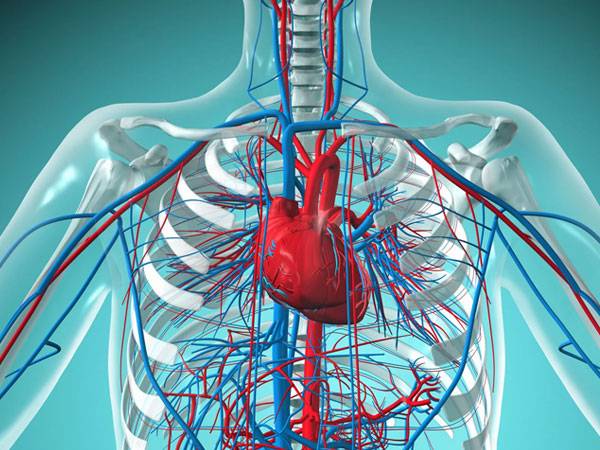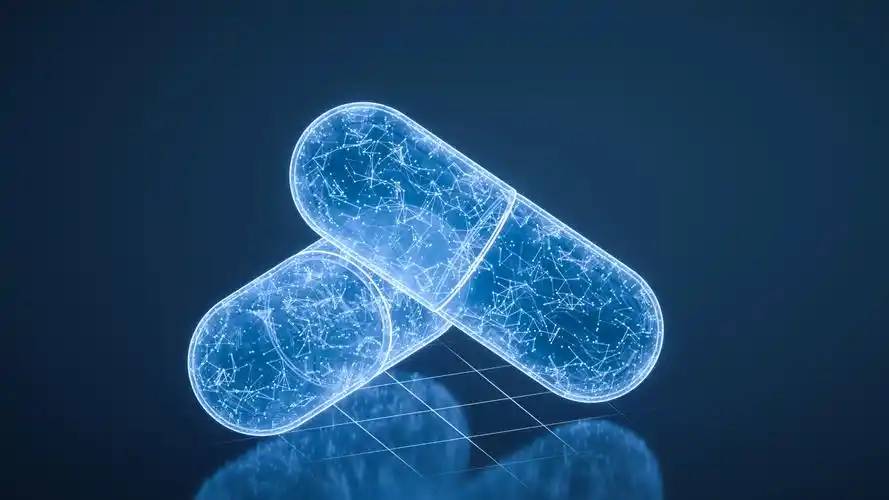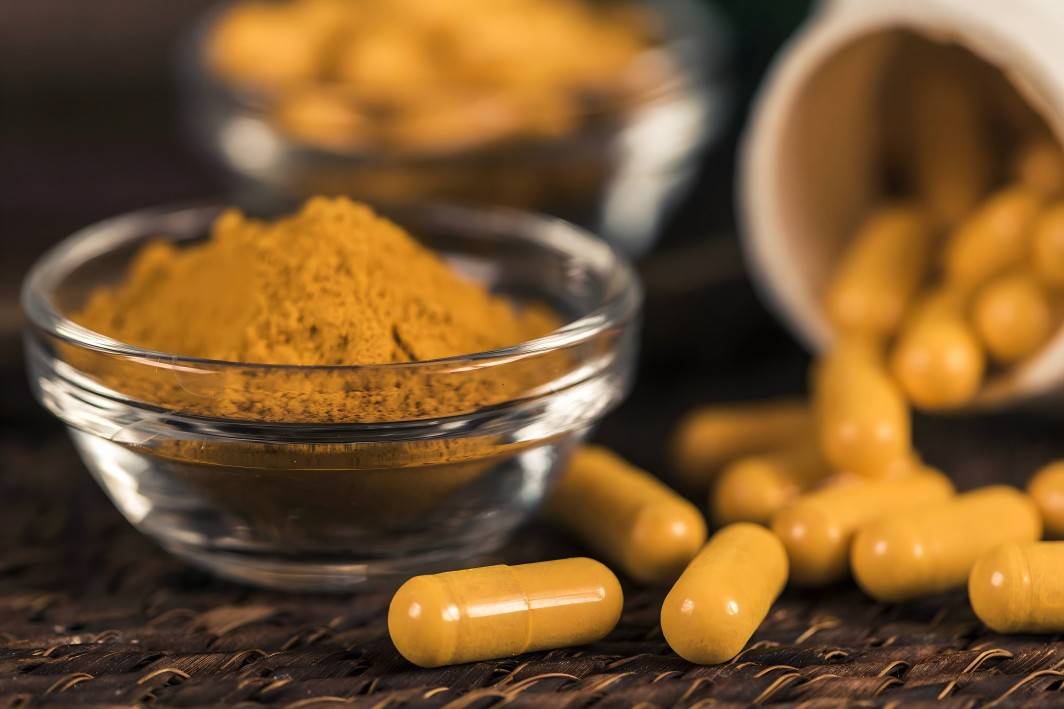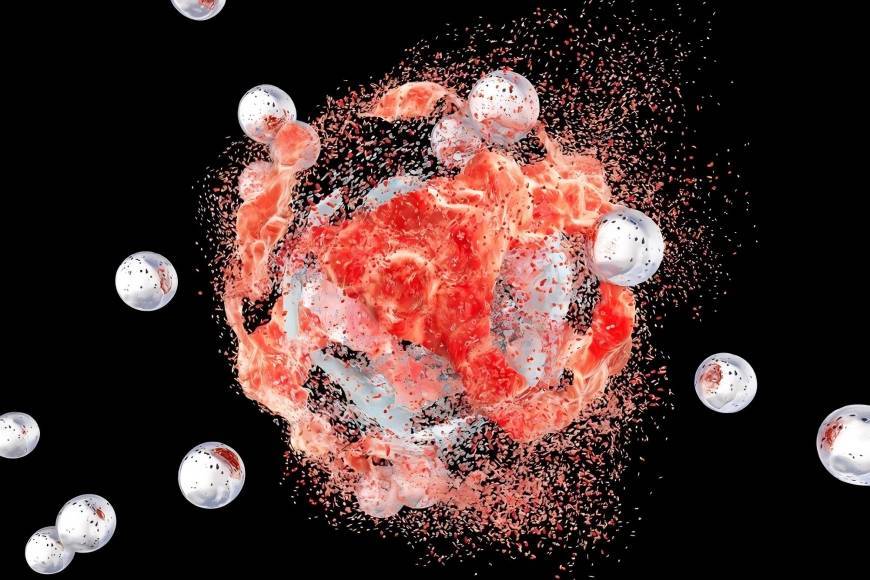Turmeric in Indian Food, What Do You Need to Know?
Curcumin is an acidic polyphenolic compound extracted from the rhizomes of plants in the ginger and araceae families. It has a β-diketone structure and is the main ingredient in traditional Chinese medicine turmeric as well as the main ingredient in curry, a seasoning widely used in Asia. Turmeric has a long history of use in China, and was first mentioned in the Song Dynasty's “Taiping Huimin Heji Bureau Formula”[1] in the “Wubi Tang” recipe. “Zhonghua Ben Cao”[2] describes turmeric as “pungent, bitter, warm, entering the spleen and liver channels; breaking blood stasis and promoting blood circulation, relieving pain”. As a health food and medicine that has been widely used for a long time, curcumin has a multi-target effect such as antioxidant, anti-inflammatory, anticoagulant, anti-tumor, etc., which can prevent cardiovascular disease and delay aging.
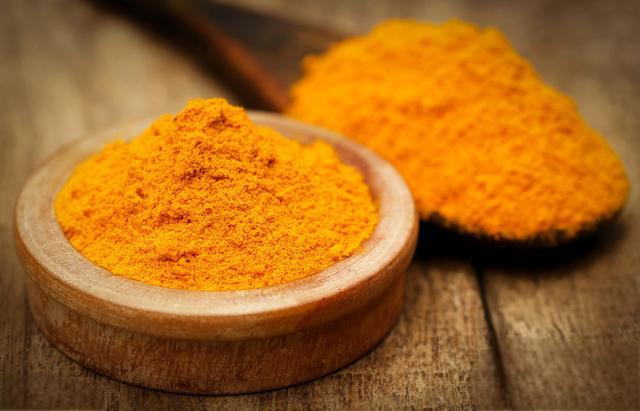
Aging is not an independent process, and it is often accompanied by the decline or weakening of the function of multiple organs and tissues, especially the nervous system, cardiovascular system and body surface skin. Systemic oxidative stress and increased inflammatory response can significantly promote aging. Aging involves both replicative aging, which is caused by irreversible cell cycle arrest, and non-replicative aging, which is caused by changes in DNA, mitochondrial function, oxidative balance, glucose metabolism, lipids, etc. The occurrence and development of aging involves multiple molecular signaling pathways [3], and a specific increase in the level of reactive oxygen species (ROS) is the key to the stress-induced cell aging process.
With the improvement of medical care, human life expectancy has increased significantly, and many countries are experiencing an ageing population. The decline in immunity, ageing of organs and accompanying diseases that come with ageing make the elderly vulnerable when dealing with sudden infectious diseases. The outbreak of the new coronavirus infection worldwide in 2020 is a major test for the ageing population. If the immunity of the elderly can be generally improved and the aging of their organs or tissues slowed down through natural methods such as health foods or drugs, the elderly population's ability to prevent epidemics can be improved, effectively reducing the burden on society and healthcare. Curcumin, which has a multi-target effect and can be used both as medicine and food, is a good choice. This article mainly focuses on the molecular mechanism and reviews the anti-aging effects of curcumin on the nervous system, cardiovascular system, skin, etc.
1 Anti-neuro-aging effects of curcumin
The development of neurodegenerative diseases is closely related to aging, and inflammation and oxidative stress are the main factors contributing to their onset. Curcumin can delay neurodegeneration by influencing multiple molecular signaling pathways and the autophagy process. 1.1 AKT-GSK-3β signaling pathway The Akt/GSK-3β pathway is an important signaling pathway that affects neuronal survival and regulates the phosphorylation of Tau protein. Phosphorylation of Tau protein and deposition of amyloid β-protein (Aβ) play an important role in the pathogenesis of Alzheimer's disease (AD) [4].
Wang et al. [5] found in an okadaic acid (OA)-induced AD mouse model that curcumin activates Akt, inhibits GSK-3β activity, reduces Tau protein phosphorylation, and improves cognitive function in the OA-induced AD mouse model. At the same time, curcumin exosomes can inhibit neuroinflammation by preventing the overactivation of microglia and the apoptosis of hippocampal nerve cells induced by OA, thereby synergistically protecting neurological function. In scopolamine-induced dementia model [6], curcumin can inhibit scopolamine-induced inactivation of hippocampal Akt and activation of GSK-3β, and improve scopolamine-induced learning and memory impairment. In addition, in human neuroblastoma SH-SY5Y cells with high expression of amyloid precursor protein (APP), curcumin can reduce the overphosphorylation of Tau protein and reduce the expression of APP protein pathway products. This effect is also related to the AKT/GSK-3β signaling pathway [7]. In summary, curcumin alleviates neurodegeneration caused by aging by affecting the AKT/GSK-3β signaling pathway.
1.2 Nrf2/HO-1 signaling pathway
Nuclear factor erythroid 2-related factor 2 (Nrf2) is a nuclear transcription factor that regulates antioxidant genes. Upregulation of Nrf2 can activate heme oxygenase-1 (HO-1) and reduce intracellular ROS expression [8]. Studies have shown that curcumin and its analogues can reduce oxidative damage in senescent PC12 cells. Curcumin inhibits the production of ROS by upregulating Nrf2 levels, restores mitochondrial membrane potential, and reduces apoptosis [9]. It can also upregulate HO-1 levels and reduce Keap1 expression [10]. In addition, Ikram et al. [11] found that curcumin inhibited the increase in ROS and LPO levels in the brain of mice induced by ethanol, relieved the inhibition of Nrf2/Ho-1 expression by ethanol, and regulated the expression of glial cell markers in the brain of mice. This effect is related to the inhibition of the TLR4/RAGE signaling pathway. In summary, curcumin delays aging by inhibiting central oxidative stress through the Keap1/Nrf2/HO-1 or Nrf2/TLR4/RAGE signaling pathway.
1.3 TLR4/NF-κB signaling pathway
The prognosis of neuroinflammation depends on the duration of the inflammatory response and the type of microglial activation. Excessive neuroinflammation can lead to neuronal damage and neurodegeneration [12]. Toll-like receptor 4 (TLR4) activation can initiate neuroinflammation and activates the NF-κB signaling pathway. Curcumin protects the brain of mice against oxidative damage by inhibiting the phosphorylation of TLR4/NF-κB/JNK, downregulating the expression of pro-apoptotic proteins Bax, Caspase-3 and PARP-1, and upregulating the expression of anti-apoptotic protein Bcl-2 [11]. In addition, Zhang et al. [13] found that curcumin can reverse lipopolysaccharide-induced M1 polarization of BV2 microglial cells, significantly increase the expression of M2 microglial cell markers, relieve the imbalance between TLR4 and TREM2 in microglia, reduce the expression of p-IκB-α and p-NF-κB p65, and reduce neuroinflammation. In summary, curcumin exerts its neuroprotective effect by regulating the TREM2/TLR4/NF-κB/JNK signaling pathway, inhibiting neuroinflammatory responses, synergistically inhibiting apoptosis, and timely transforming the M1 phenotype of microglia into an M2 phenotype. Prompting the transformation of the M1 phenotype of microglia into an M2 phenotype may serve as a new strategy for the treatment of neuroinflammatory diseases.
1.4 Autophagy
Autophagy is one of the body's protective mechanisms. Oxidative stress can stimulate autophagy, which can engulf and degrade oxidants to reduce oxidative damage. The occurrence and development of neurodegenerative diseases are also related to the dysfunction of autophagosomes [14]. Therefore, increasing autophagy activity and promoting autophagy flux can be used as targets for drug development. Targeting the transcription factor EB (TFEB) is an important regulator of the autophagy-lysosome pathway. TFEB-mediated autophagy can promote the removal of damaged mitochondria and excess ROS [14].
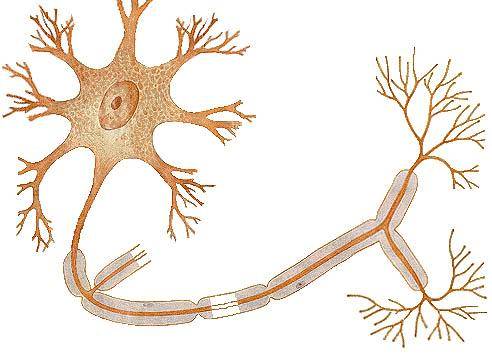
In animal models of AD, curcumin analogues were found to directly activate TFEB without inhibiting the activity of mTORC1 and MAPK1/ERK2, thereby promoting autophagy and lysosomal activity, degrading APP and Tau aggregates, reducing Aβ levels, and improving cognitive dysfunction caused by AD [15]. In addition, in a cell model of Parkinson's disease (PD) caused by oxidative stress, curcumin can enhance TFEB nuclear translocation and autophagy, and reduce neuronal death [16]. Liang et al. [17] found that when studying the formation of autophagosomes and axonal transport in an AD cell model, curcumin significantly up-regulates the expression of autophagy-related proteins Beclin1, ATG5 and Atg16L1, enhances the autophagy flux, and promotes the fusion of autophagosomes with lysosomes. At the same time, curcumin promotes the expression and binding of dynein, dynactin and BICD2, and increases the expression of Rab7 lysosomal interaction protein and Huntington protein. In summary, curcumin reduces oxidative stress damage in AD and PD through TFEB-mediated autophagy, and delays neurodegeneration by regulating the dynein-dynactin-BICD2 complex to promote autophagic axonal transport and increase autophagic flux.
2. The cardioprotective effect of curcumin
Aging is often accompanied by vascular aging, which is manifested as atherosclerosis (atherosclerosis, AS) and atherosclerotic cardiovascular disease, characterized by chronic inflammation.
2.1 TLR4/MAPK/NF-κB signaling pathway
TLR4 stimulation produces NF-κB and pro-inflammatory factors, leading to an inflammatory response and participating in the pathogenesis of AS. This was found in a model of AS in mice fed a high-fat diet with apolipoprotein E knockout (ApoE-/-). Curcumin can reduce the expression of TLR4 in the aorta and macrophage infiltration, inhibit the expression of NF-κB and pro-inflammatory factors (IL-1, TNF-α), and reduced VCAM-1 and ICAM-1 levels [18]. Matrix metalloproteinases (MMPs)-9 and extracellular matrix metalloproteinase inducer (EMMPRIN) overexpression play a key role in the development of atherosclerotic plaque formation and rupture. Cao et al. [19] found that curcumin reduced the expression of MMP-9 and EMMPRIN in macrophages induced by oxidized low-density lipoprotein (OxLDL) by downregulating the activity of the NF-κB and p38 MAPK signaling pathways. Zhang et al. [18] found that curcumin inhibited the expression of NF-κB and TLR4 mRNA in lipopolysaccharide-induced macrophages. In summary, curcumin prevents AS by inhibiting the TLR4/MAPK/NF-κB pathway, reducing vascular inflammation and monocyte/macrophage activity.
2.2 AMPK/SIRT1 signaling pathway
Silencing information regulator 1 (sirtuin-1, SIRT1) plays a key role in regulating apoptosis, aging and lipid metabolism. Curcumin alleviates H2O2-induced premature senescence of human umbilical vein endothelial cells by activating the AMPK/SIRT1 signaling pathway [20]. The adhesion of monocytes/macrophages to endothelial cells and their infiltration into the subcutaneous layer are mediated by various chemokines, such as monocyte chemotactic protein-1 (MCP-1). Takano et al. [21] studied the effect of curcumin on vascular aging and chronic inflammation in mice fed a high-fat diet for a long period (72 weeks). Curcumin reduced the activity of SA-β-Gal in mice fed a high-fat diet, reduced the accumulation of senescent cells in the aorta, and reduced the expression of MCP-1 mRNA in the aorta and the level of MCP-1 in the blood. In addition, curcumin reduced oxidative stress in the aorta by activating HO-1, and increased the expression of SIRT1 protein in the aorta of mice fed a high-fat diet. In summary, curcumin reduces AS inflammation and delays vascular aging by activating SIRT1, inhibiting MCP-1, and inhibiting macrophage infiltration.
3 Anti-skin aging effect of curcumin
The skin is directly exposed and vulnerable to environmental toxins, making it the most aging tissue. Ultraviolet damage is the most common, and long-term exposure can cause photoaging of the skin, producing a large amount of ROS, which can lead to skin damage and skin cancer through inflammation.
3.1 TGF-β/Smads signaling pathway and NF-κB signaling pathway
TGF-β is a major regulatory factor involved in wound repair and is regulated by the phosphorylation of Smads proteins. Liu et al. [22] found in a UVA-induced human dermal fibroblasts (HDFs) photoaging model that curcumin can reduce collagen degradation by downregulating the expression of MMP-1, MMP-2, and MMP-3, and upregulates the protein expression of TGF-β and Smad2/3, while downregulating the expression of Smad7. Meanwhile, curcumin reduces the accumulation of ROS in HDFs, restores the activity of antioxidant enzymes; downregulates NF-κB and Caspase-3, upregulates the expression of Bcl-2, inhibits UVA-induced apoptosis, and thus promotes the repair of damaged cells [22]. In addition, β1 integrin is a cell surface receptor involved in fibrous tissue formation and skin repair. Downregulation of β1 integrin is a sign of skin aging. Towakol et al. [23] found that a curcumin nanodispersion with a particle size of 77 nm and curcumin nanodispersions containing 3% ethanol can significantly enhance the expression of β1 integrin in fibroblasts, inhibit fibroblast apoptosis and NF-κB activation. In summary, curcumin promotes collagen synthesis in fibroblasts by activating the TGF-β/Smads signaling pathway, downregulates NF-κB and pro-apoptotic proteins, inhibits skin inflammation, and promotes wound repair.
3.2 Keap1/Nrf2 signaling pathway
Endogenous Nrf2 can alleviate the symptoms of photoaging in the skin [8]. Curcumin induces the transcription and translation of HO-1 in mouse epidermal cells by activating Nrf2 [24]. When curcumin microemulsion is applied topically to the skin [25], a significant increase in curcumin concentration in the dermis is detected. Curcumin reduces UVB-induced cytotoxicity by activating the Keap1/Nrf2 pathway. This may be related to the α-β-unsaturated carbonyl part of curcumin [24], which covalently binds to the active sulfur atom of the cysteine residue of Keap1, preventing the ubiquitination and proteasomal degradation of Nrf2 and stabilizing the expression of Nrf2. In summary, curcumin protects the skin by reducing oxidative stress by activating the Keap1/Nrf2 signaling pathway.
4 Conclusion and outlook
Turmeric has a long history of use as a medicine and is widely used as a food flavoring in the Asian region. It has diverse effects, especially antioxidant and anti-inflammatory effects, which are the main basis for its anti-aging effects. Turmeric extract is safe, non-toxic, well tolerated, and inexpensive. 12 g/d for more than 3 months of continuous use will not cause damage to the liver and kidneys [26]. Therefore, it can be used as a natural “anti-aging food” for long-term use.
The ageing of the world's population has brought many medical problems. In people over 60 years old, there is a significant increase in the ageing of tissues and organs and associated diseases, as well as a decline in overall function and immunity. Once they encounter a major infectious disease, the prognosis may not be good. The outbreak of the new coronavirus pneumonia in 2020 has caused tremendous harm to the elderly population. A sharp increase in the number of patients within a short period of time will lead to a shortage of medical resources, and elderly patients will not receive good treatment. The possibility of relying on their own immune systems to heal is extremely low. At present, there are obvious regional differences in the morbidity and mortality rates of new coronavirus infections in the world. The reasons for this may be related to government measures and the culture, traditions, habits, cognition, etc., but it is also not possible to rule out the physical differences brought about by regional dietary differences. For example, Japan and Italy, which rank first and second in the world in terms of aging, have huge differences in morbidity and mortality rates. The Japanese diet is light, with a high proportion of fish, and a preference for curry dishes that are rich in curcumin and pepper. It remains to be studied whether the overall strong function and slow aging of the elderly population is involved in disease resistance.
However, there are certain problems with the use of curcumin, such as its instability under physiological conditions and low oral bioavailability. At present, various attempts have been made to increase the intake and distribution of curcumin, such as the combined application of curcumin and piperine; the development and utilization of curcumin analogues and derivatives; the creation of curcumin-phospholipid complexes, microemulsions, liposomes, polymeric micelles and curcumin nanoparticles. Once solved, it will undoubtedly provide a broader prospect for curcumin's dual-use anti-aging properties.
References
[1] Song Taiping Huimin Heji Bureau. Taiping Huimin Heji Bureau Fang [M]. Beijing: People's Medical Publishing House, 1985: 37, 85.
[2] Editorial Board of Zhonghua Materia Medica, State Administration of Traditional Chinese Medicine. Zhonghua Materia Medica: Volume 8 [M]. Shanghai: Shanghai Science and Technology Press, 1999: 632-636.
[3] Xu S, Cui HJ, Zhao W, et al. Research progress on the molecular mechanism of cell senescence [J]. Journal of Guangdong Medical University, 2020, 38(1): 1-10.
[4] Guo K. The relationship between calmodulin and PP2A and GSK-3β in Alzheimer's disease [J]. Chinese Journal of Pharmacology and Toxicology, 2019, 33(6): 434.
[5] Wang H,Sui H,Zheng Y,et al. Curcumin-primed exosomes potently ameliorate cognitive function in AD mice by in- hibiting hyperphosphorylation of the Tau protein through the AKT/GSK-3beta pathway [J]. Nanoscale,2019,11(15): 7481-7496.
[6] Soukhaklari R,Moezi L,Pirsalami F,et al. Curcumin ame- liorates scopolamine-induced mice memory retrieval deficit and restoreshippocampalp-Akt and p-GSK-3beta [J]. Eur JPharmacol,2018,841:28-32.
[7] Qu Fei. Protective effect of curcumin on AD cells (SH-SY5Y/APP695swe) [J]. University of Electronic Science and Technology of China, 2019.
[8] Wang Tiantian, Chen Chunyuan, Yang Lei, et al. The mechanism of Nrf2/HO-1 signaling axis in oxidative stress diseases [J]. Journal of Central South University: Medical Sciences, 2019, 44(1): 74-80.
[9] Liao L,Shi J,Jiang C,et al. Activation of anti-oxidant of curcumin pyrazole derivatives through preservation of mi- tochondria function and Nrf2 signaling pathway [J]. Neu- rochem Int,2019,125:82-90.
[10] Xu J,Zhou L,Weng Q,et al. Curcumin analogues atten- uate Aβ -induced oxidative stress in PC12 cells via Keap1/Nrf2/HO-1 signaling pathways [J]. Chem Biol In- teract,2019,305:171-179.
[11] Ikram M,Saeed K,Khan A,et al. Natural Dietary Sup- plementation of Curcumin Protects Mice Brains against Ethanol -Induced Oxidative Stress -Mediated Neurode- generation and Memory Impairment via Nrf2/TLR4/ RAGE Signaling [J]. Nutrients,2019,11(5):1082.
[12] Zhao Mengqi, Liao Hong. Research progress on the relationship between neuroinflammation and cognitive dysfunction in disease. Journal of China Pharmaceutical University, 2019, 50(4): 497-504.
[13] Zhang J,Zheng Y,Luo Y,et al. Curcumin inhibits LPS- induced neuroinflammation by promoting microglial M2 polarization via TREM2/ TLR4/ NF-κB pathways in BV2 cells [J]. Mol Immunol,2019,116:29-37.
[14] Pan Yige. Autophagy and neurodegenerative diseases [J]. Chinese Journal of Practical Neurology, 2019, 22(8): 917-921.
[15] Song JX,Malampati S,Zeng Y,et al. A small molecule transcription factor EB activator ameliorates beta - amy- loid precursor protein and Tau pathology in Alzheimer's disease models [J]. Aging Cell,2019,19(2):e13069.
[16] Zhuang XX,Wang SF,Tan Y,et al. Pharmacological en- hancement of TFEB-mediated autophagy alleviated neu- ronal death in oxidative stress-induced Parkinson's dis- ease models [J]. Cell Death Dis,2020,11(2):128.
[17] Liang J,Zhou F,Xiong X,et al. Enhancing the retrograde axonal transport by curcumin promotes autophagic flux in N2a/APP695swe cells [J] . Aging ,2019,11(17):7036 - 7050.
[18] Zhang S,Zou J,Li P,et al. Curcumin Protects against Atherosclerosis in Apolipoprotein E -Knockout Mice by Inhibiting Toll-like Receptor 4 Expression [J]. J Agric Food Chem,2018,66(2):449-456.
[19] Cao J,Ye B,Lin L,et al. Curcumin Alleviates oxLDL Induced MMP-9 and EMMPRIN Expression through the Inhibition of NF - kappaB and MAPK Pathways in Macrophages [J]. Front Pharmacol,2017,8:62.
[20] Sun Y,Hu X,Hu G,et al. Curcumin Attenuates Hydro- gen Peroxide-Induced Premature Senescence via the Ac- tivation of SIRT1 in Human Umbilical Vein Endothelial Cells [J]. Biol Pharm Bull,2015,38(8):1134-1141.
[21] Takano K,Tatebe J,Washizawa N,et al. Curcumin In- hibits Age-Related Vascular Changes in Aged Mice Fed a High-Fat Diet [J]. Nutrients,2018,10(10):1476.
[22] Liu X,Zhang R,Shi H,et al. Protective effect of curcum- in against ultraviolet A irradiationinduced photoaging in human dermal fibroblasts [J]. Mol Med Rep,2018,17(5):7227-7237.
[23] Tavakol S ,Zare S ,Hoveizi E ,et al. The impact of the particle size of curcumin nanocarriers and the ethanol on beta_1-integrin overexpression in fibroblasts:A regener- ative pharmaceutical approach in skin repair and anti - aging formulations [J]. Daru,2019,27(1):159-168.
[24] Shin JW ,Chun KS,Kim DH,et al. Curcumin induces stabilization of Nrf2 protein through Keap1 cysteine mod- ification [J]. Biochem Pharmacol,2020,173:113820.
[25] Ben Yehuda Greenwald M. Curcumin Protects Skin against UVB-Induced Cytotoxicity via the Keap1-Nrf2 Pathway: The Use of a Microemulsion Delivery System [J]. Oxid Med Cell Longev,2017,2017:5205471.
[26] Patel SS,Acharya A,Ray RS,et al. Cellular and molec- ular mechanisms of curcumin in prevention and treat- ment of disease[J]. Crit Rev Food Sci Nutr,2020,60(6):887-939.


 English
English French
French Spanish
Spanish Russian
Russian Korean
Korean Japanese
Japanese